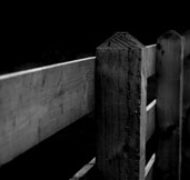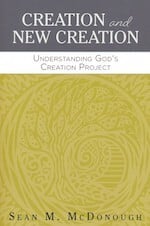The Work of an Adjuster
Blog / Produced by The High Calling
When our policyholder backed his milk truck out of the yard, he took a bit of the farmer’s fence with him. A post and split rail fence, hewn of cedar and weathered hard over twenty-five years of wind and rain and snow.
The same fence the kids all climbed and fell off and tore their jeans on. The same fence where they tied the horses and the dogs lifted their back legs. The same fence where they took the family Christmas picture in 1992, the year the eldest left home. And 1997, the year the baby came. And 2003, the year before Mom died.
Twenty-five feet of that twenty-five year fence now lay in splinters between the alfalfa and the gravel driveway.
We owed the farmer the fence we broke. But we didn’t have twenty-five years to weather a new set of rails and gird up the posts with the rich stories of his life.
So how would he be made whole?
Everybody Wants to Be Made Whole
Where I go to work, folks lose stuff every day. A car, or part of one. A roof, a window, an overstuffed chair. Maybe they lose everything they own if there’s enough fire, water or smoke.
Sometimes, they lose a piece of themselves. A strained ligament, a crushed vertebra or a disfiguring scar. Depending on how hard a fall, or how severe a crash, maybe they lose their memory. Or on the very worst days, the one they love buckled into the passenger seat.
Everybody’s losing a piece of their life. And everybody wants to be made whole again.
So when I wheel my chair up to the desk to sit opposite the weather reports and crash reports, medical records and photographs, sworn statements and expert opinions, I try to pretend that’s something I can do. Make someone whole.
The tools of my trade are checkbooks and calculators.
And new life those things don’t make.
We Put People Back
That day, as an adjuster and I tried to sort out what was owed to the farmer, a couple of fellow supervisors walked by on their way to the water cooler. I called them in for a round-table to see if we could make an art of the science of restoration.
“We owe to put him back in his pre-loss condition,” I said. “To make him like he was before we ran over his fence. I say we replace the damaged pieces.”
“No,” said one colleague. “It’ll look terrible, new wood against the weathered rail. Buy him a whole new fence on that side.”
The other, after some thought, said “You’re both wrong. Buy him new rails and posts to replace the broken section. But it’s twenty-five years old and now he’s getting brand new. It’s an improvement. Depreciate the hell out of it.”
A Bank Draft Makes a Poor Bandage
This notion, that we can be made whole by being returned to our former state, and what’s more, that we even can be returned to that, it crawls up my back the wrong way.
When I come face to face with the injured party who knows these words and insists on his right — or simply pleads — to be made whole, I wither just a bit inside. I know this one never will be, for a demand met to the penny will still not satisfy the longing of one who has lost to find it back again.
To settle that claim a few years ago, we paid a farmer for new posts and rails to replace the ones that were destroyed. And we threw in a little extra because the new wood would be an eyesore for a while. But it’s hard to see how we put him back.
Brand new stands in cold contrast to the life-worn. And bank drafts make poor bandages for flesh wounds.
I wonder, my goodness I wonder, how different might my work look if fine principles like indemnification and compensation took a back seat to greater ones like redemption.
Because I know, when He did what He did to make me whole, the farthest thing from His mind was putting me back in the same position as I was before.
Fence Photo by Claire Burge. Used with permission. This post is a reprint of a post originally titled "On Being Made Whole," by Lyla Lindquist.
Amazon.com Widgets





